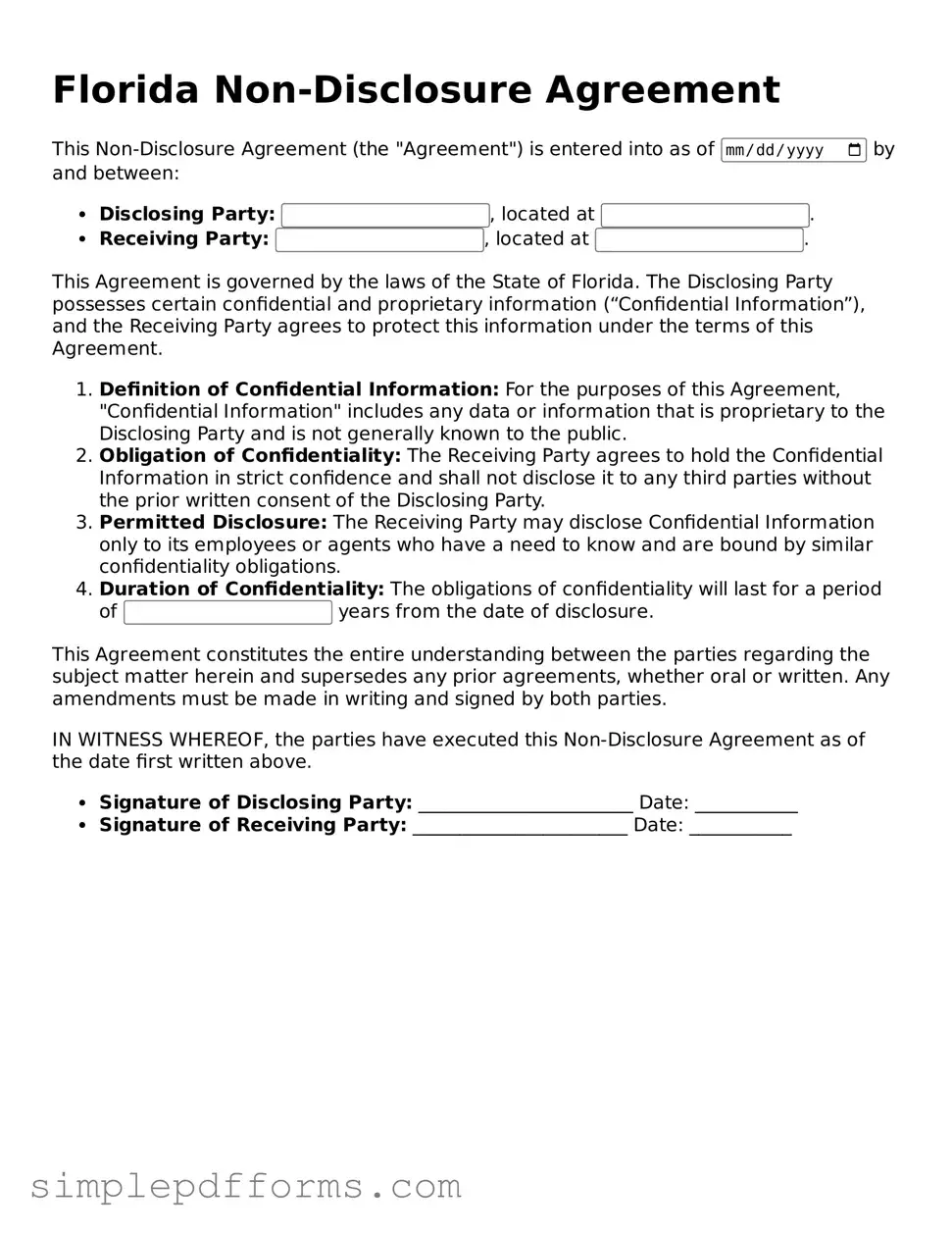Attorney-Verified Non-disclosure Agreement Document for Florida State
A Florida Non-disclosure Agreement (NDA) is a legal document designed to protect confidential information shared between parties. This agreement ensures that sensitive information remains private and is not disclosed to unauthorized individuals. By establishing clear terms, the NDA helps foster trust and security in business relationships.
Open Non-disclosure Agreement Editor Now
